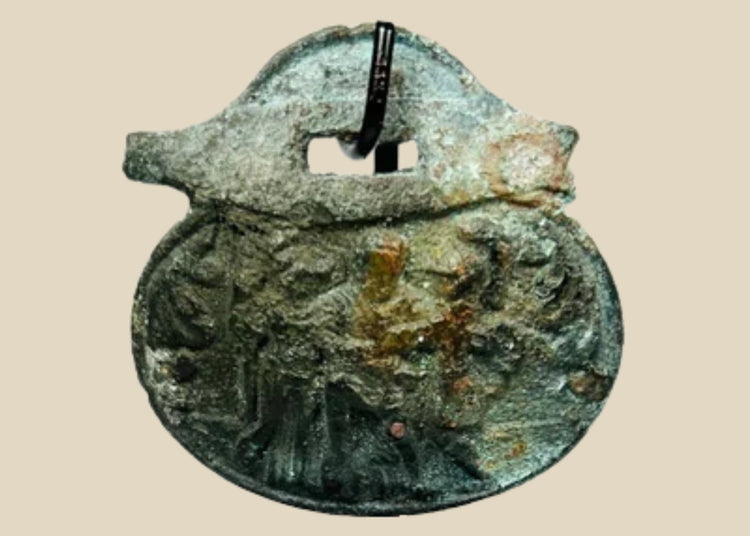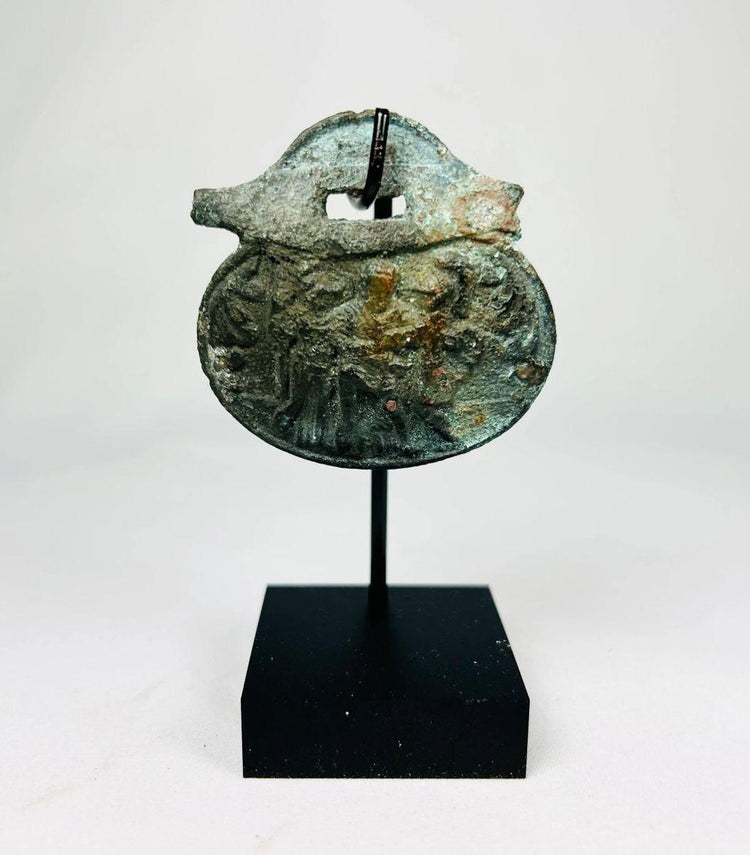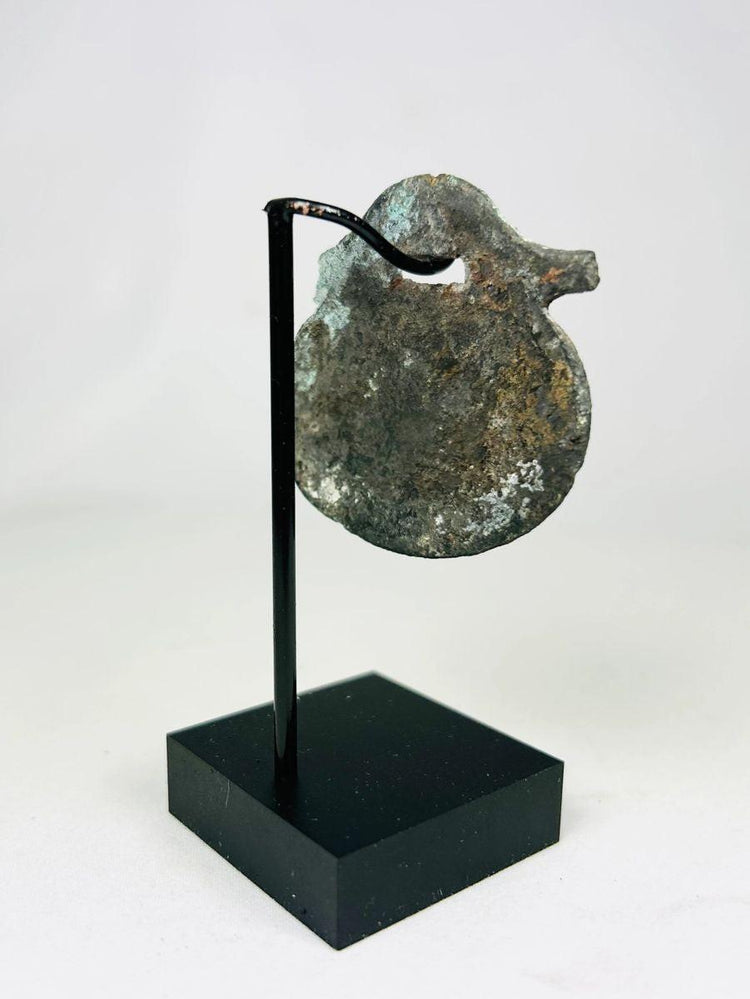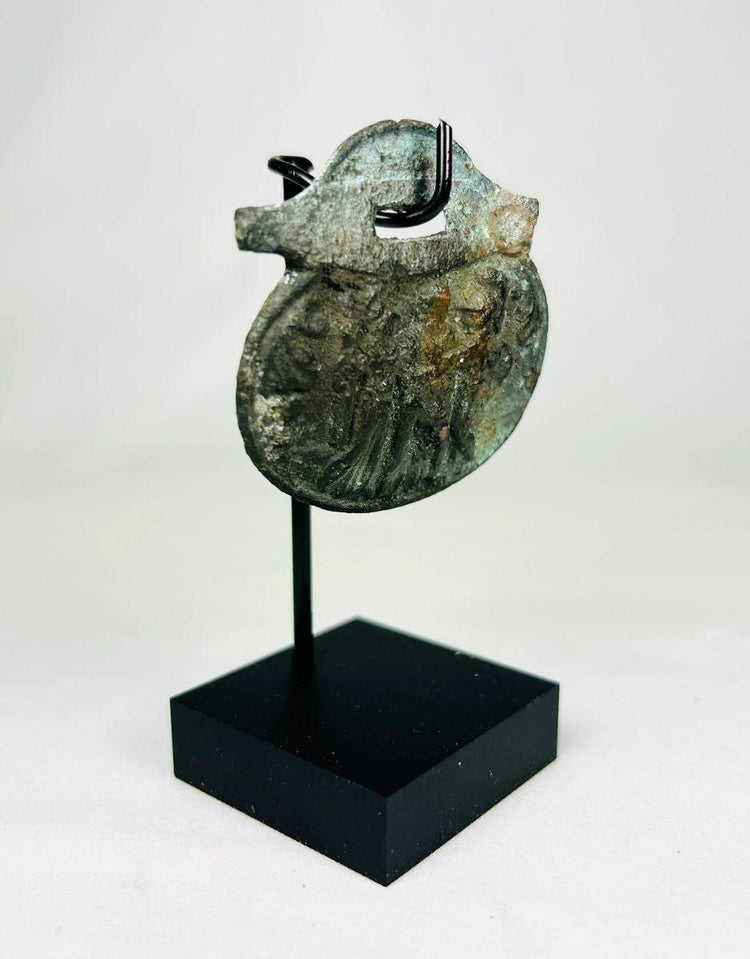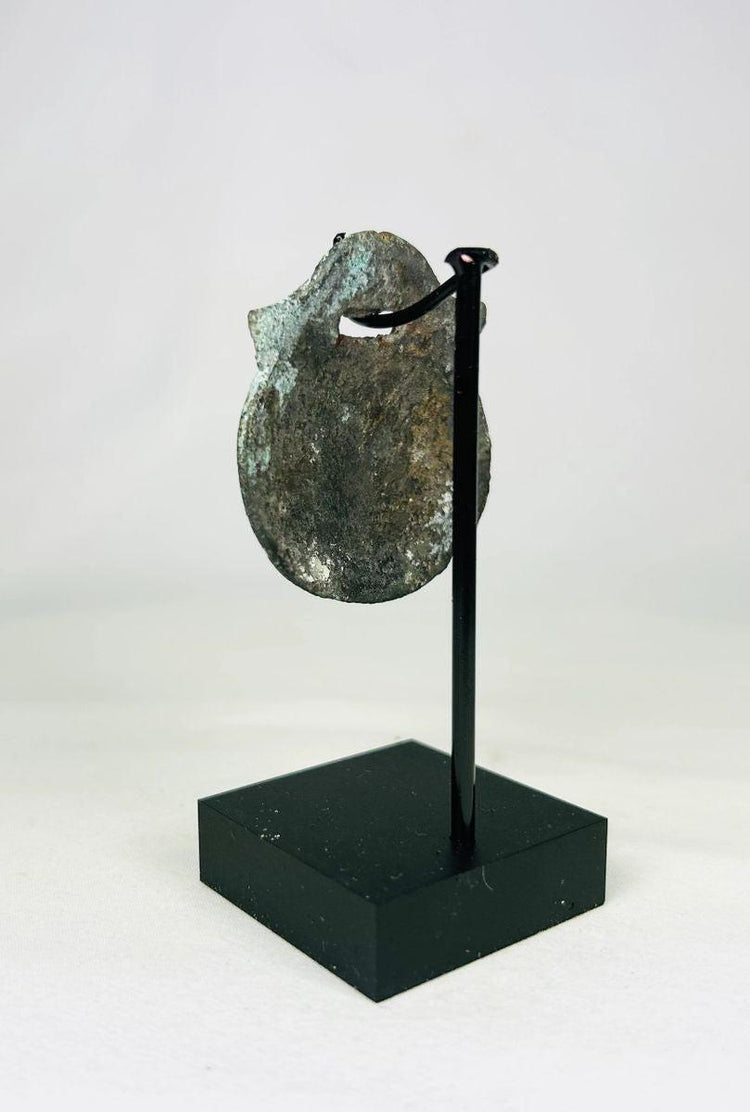Ancient Roman | Bronze Pendant with Soldier Motif | Circa 1st - 4th Century CE
Description
More
Less
Historical Context & Origin
Region: Ancient Roman Empire
Material: Cast bronze with engraved decoration
Period: 1st–4th Century CE
Description
This rare bronze pendant reflects the deeply symbolic role of amulets and insignia in Roman society. Crafted with a suspension loop for wearing on a cord or chain, it likely served as a personal amulet, military badge, or votive token. The engraved surface depicts three standing figures—possibly Roman soldiers, legionnaires, or deities—with one figure wearing a distinctive helmet or headdress. The presence of a helmeted figure strongly suggests martial or divine associations, possibly invoking the protection of Mars, the god of war, or serving as an emblem of military service. Such pendants were widely used by soldiers, officials, and civilians, carried as both protective charms and expressions of loyalty or faith.
Features
- Rounded bronze pendant with suspension loop
- Engraved imagery of three standing figures, one helmeted
- Rich green and brown patina from centuries of burial
- Symbolic military or religious associations
- Mounted on a custom museum-quality display stand
Cultural Significance
Amulets and pendants played an important role in Roman life, bridging the sacred and the practical. Soldiers often carried such charms into battle for protection, while civilians wore them for blessings, prosperity, or devotion to deities. This example, with its soldier or deity motif, encapsulates the dual role of faith and military might in the Roman Empire, making it a powerful symbol of Roman identity.
Condition
The pendant is well-preserved, with a stable form and an attractive aged patina. The suspension loop remains intact, and the engraved imagery is still visible, though softened by time and natural corrosion. The green and brown oxidation confirms its great antiquity while enhancing its historical character.
Dimensions (approximate)
Height: 2 in
Width: 2 in
Age
Over 1,600 years old
Learn More
Uncover the Secrets of Ancient Roman Jewelry
Description
Historical Context & Origin
Region: Ancient Roman Empire
Material: Cast bronze with engraved decoration
Period: 1st–4th Century CE
Description
This rare bronze pendant reflects the deeply symbolic role of amulets and insignia in Roman society. Crafted with a suspension loop for wearing on a cord or chain, it likely served as a personal amulet, military badge, or votive token. The engraved surface depicts three standing figures—possibly Roman soldiers, legionnaires, or deities—with one figure wearing a distinctive helmet or headdress. The presence of a helmeted figure strongly suggests martial or divine associations, possibly invoking the protection of Mars, the god of war, or serving as an emblem of military service. Such pendants were widely used by soldiers, officials, and civilians, carried as both protective charms and expressions of loyalty or faith.
Features
- Rounded bronze pendant with suspension loop
- Engraved imagery of three standing figures, one helmeted
- Rich green and brown patina from centuries of burial
- Symbolic military or religious associations
- Mounted on a custom museum-quality display stand
Cultural Significance
Amulets and pendants played an important role in Roman life, bridging the sacred and the practical. Soldiers often carried such charms into battle for protection, while civilians wore them for blessings, prosperity, or devotion to deities. This example, with its soldier or deity motif, encapsulates the dual role of faith and military might in the Roman Empire, making it a powerful symbol of Roman identity.
Condition
The pendant is well-preserved, with a stable form and an attractive aged patina. The suspension loop remains intact, and the engraved imagery is still visible, though softened by time and natural corrosion. The green and brown oxidation confirms its great antiquity while enhancing its historical character.
Dimensions (approximate)
Height: 2 in
Width: 2 in
Age
Over 1,600 years old
Learn More
Uncover the Secrets of Ancient Roman Jewelry
You May Also Like






















